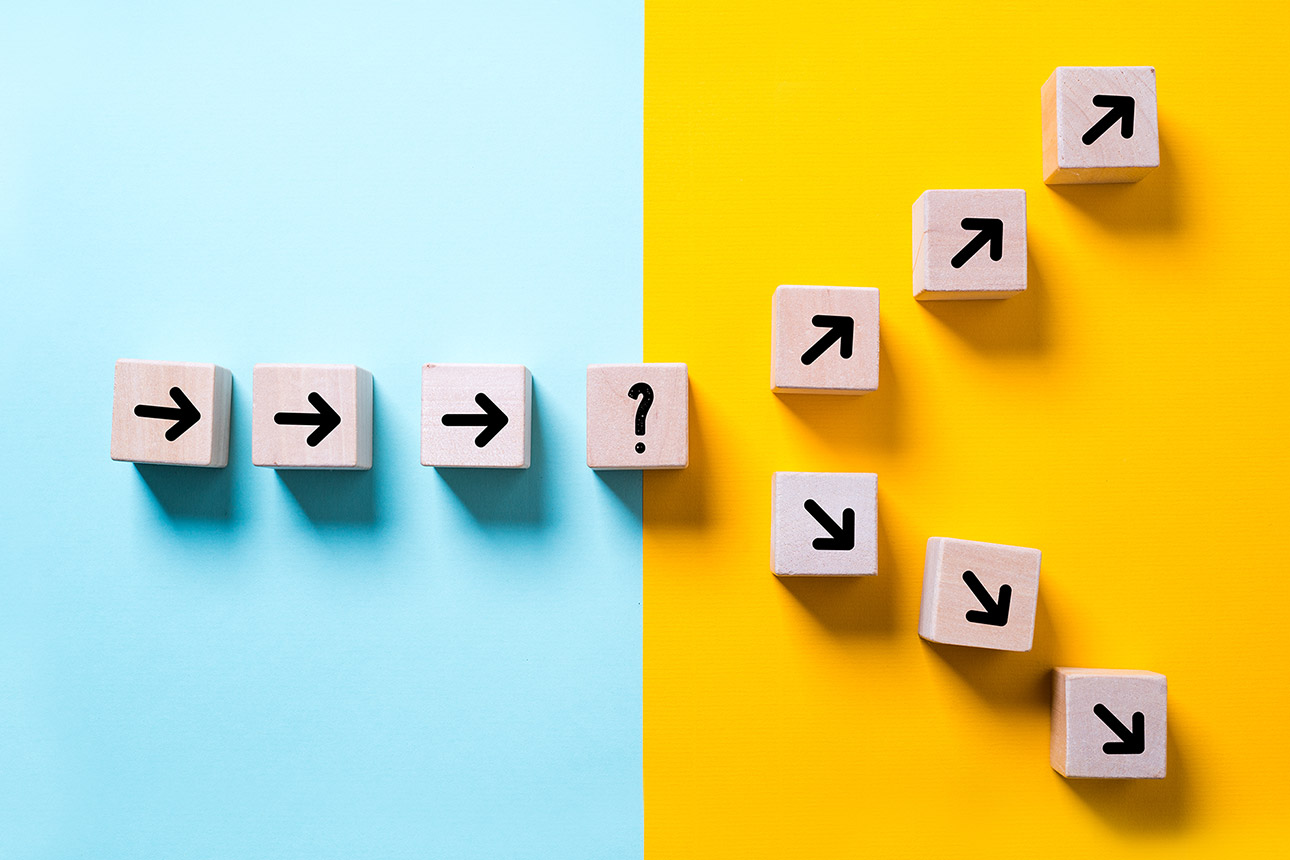How to Make Better Decisions About Coronavirus

Topics
Column

Decision-making becomes most important in times of crisis, and this certainly is one of those times. But it also becomes more challenging, too, during periods of stress and most difficult when future outcomes are uncertain — which describes the current period as well. One reason is because cognitive decision biases are likely to appear in highly changeable, high-stress environments, influencing decisions in damaging ways.
The field of behavioral economics, led by social psychologists Daniel Kahneman and Amos Tversky, has identified a number of cognitive biases that affect decision-making — usually in a negative way. There is no definitive list of such biases, but Wikipedia lists 124 decision-oriented biases. It’s sobering to note all the ways in which human brains distort decision processes; perhaps it’s a wonder that any good decision is ever made.
Get Updates on Transformative Leadership
Evidence-based resources that can help you lead your team more effectively, delivered to your inbox monthly.
Please enter a valid email address
Thank you for signing up
I’ve been thinking of all the decision biases that have come into play with regard to COVID-19. Among some of our (U.S.) political leaders, and the citizens of this country as well, decision biases of multiple types seem to be in evidence. Perhaps seeing these pointed out will improve decision processes for all of us — including politicians who make large-scale decisions affecting millions, business leaders who make decisions affecting their organizations and many stakeholders, and those who make decisions for themselves and their families.
Common Biases Framing Our COVID-19 Thinking
Emotion-driven beliefs and intuition are powerful at guiding people toward less-than-optimal decisions. By understanding our biases, we have a better chance of quieting them and moving toward better choices.
I have listed the biases that I think are most related to the decisions we need to make around COVID-19 in the rough order of their commonality and importance. (There are so many that if I listed them alphabetically, you might never find the important ones!)
Status quo bias. I found myself guilty of this one several times in the early stages of the pandemic. The status quo bias involves considering the current state of affairs to be optimal and anything different as a loss. I found myself saying, “We planned this event, so we should have it.” A number of my clients who planned events were grumbling about the same thing, failing to adjust to the new reality.
The way to push past this bias is to ask, “Would I plan this same event/flight/meeting today, given today’s situation?” In most cases, you’ll realize that adjusting to the new reality — canceling or modifying your plans — is both the right thing to do and not that hard.
Political bias. While the coronavirus has no politics, people do — and their politics affect how they interpret information and make decisions. In the U.S., it was really quite striking how closely political views initially correlated with opinions about whether the coronavirus was taken as a serious threat (though the parties seem to be converging on that one), what actions should be taken with regard to it, and how well the federal government and president are doing in leading us through the crisis.
The media appealing to different political groups stoked the bias. You know the pattern: Fox News initially had multiple commenters who argued that COVID-19 was an anti-Trump hoax, while MSNBC and CNN spent a lot of time criticizing the Trump administration’s response to the virus.
At times like these, it may be helpful for all of us to make admissions, however grudging (“I guess this virus was not a Democrat hoax after all” or “Trump initially denied the seriousness of the virus, but he seems engaged in addressing it now”). Consulting fact-checking websites like PolitiFact and FactCheck.org can be an antidote to this bias, as can spending more time on news stories than opinion columns.
Confirmation bias. One of the most common decision biases is confirmation bias, in which we search for and pay more heed to information that supports our own views. It’s a more generalized case of political bias.
Confirmation bias about the pandemic is supported by what’s been called an infodemic — COVID-19–related misinformation in social media content. If you’re biased against China, for example, you are probably comfortable with media accounts (and Trump tweets) that emphasize the coronavirus’s Chinese origins. If you’re biased against the U.S., you may believe social media messages suggesting that the U.S. developed the virus and implanted it in Wuhan, China.
The key to avoiding confirmation bias about the virus is to seek out sources that may contradict your biases and that are well supported by respected information sources like the Centers for Disease Control and Prevention’s coronavirus site, and the World Health Organization’s equivalent site. The latter’s “Myth Busters” page can be particularly useful.
Availability heuristic. The COVID-19 pandemic is a complex and multifaceted issue. Many people initially found it more “available,” meaning accessible to engage with, by discussing the famous people who contracted the virus in its first weeks in Western countries. They included celebrities (actors Tom Hanks and Rita Wilson, athlete Kevin Durant, opera singer Plácido Domingo, Harvard University president Lawrence Bacow) and political leaders (U.S. Sen. Rand Paul, Canadian Prime Minister Justin Trudeau’s wife Sophie, the U.K.’s Prince Charles, and Prime Minister Boris Johnson).
But the availability of information about high-profile sufferers of the virus may shine light on atypical factors in the pandemic and may make us overlook more important patterns around the spread of the disease. Instead, in general, it’s more useful to pay attention to the data about a situation than to highly available anecdotes.
Framing effect. One of the most powerful influences on any decision is how the issue to be decided is framed. At the moment, the very large and important issue of how to manage the virus in the U.S. is increasingly framed as a “save the economy or lock everything down” question, with President Trump weighing in on the former side (at least initially) and scientists largely on the latter.
Binary, either/or framing is often suboptimal. It masks the possibility of other alternatives, or pursuing one decision in some places or situations and a different one in others. If possible, consider multiple different framings of the same decision — ideally some with nonbinary outcomes.
Bandwagon effect. Day to day during the pandemic’s course, you’ll notice various ideas rising and falling in what dominates the conversation. The nature of these topic-of-the-moment dialogues is that they often grow fast and full of inaccuracies until clearer thinking shuts them down.
There is, for example, growing excitement about the old drug chloroquine for malaria treatment (or other drugs in combination with it) as a possible antidote to the virus; President Trump jumped on that bandwagon early and vocally. While that particular drug is surely deserving of further and more systematic research, joining that bandwagon may be inappropriate. Instead, follow the pronouncements of scientists and serious journalists, who are usually trained to be skeptical of bandwagons.
Hostile attribution bias. When others don’t agree with us in a time of high stress, we tend to attribute hostile intent to them. For example, people who flocked outdoors early during the virus crisis may have been seeking only to commune with nature or be solitary outside the confines of their homes, but they were accused by the media and policymakers of intentional violation of social distancing recommendations.
Assuming hostile intent, of course, only raises everyone’s stress levels. Since you don’t know the details of everyone else’s situations or motivations, assume the best intentions unless you have firm evidence otherwise.
Neglect of probability. Public health and epidemiology are probabilistic fields, as is the individual attempt to evade a microbe. No treatment or intervention can lower the relevant probability to zero or raise it to 100%; one can only lower or raise the probability within limits. Yet many lay people are uncomfortable with probabilistic thinking, and have a strong preference for absolute judgments.
In the case of COVID-19, probabilistic thinking and decision-making are made even more difficult by the shortage of good data on how the virus is transmitted, death or hospitalization rates in infected patients, and the most effective treatment strategies. When that kind of data becomes available, let’s hope that policymakers make effective use of it. In our individual behaviors, since we can’t know absolutely where microbes lie, the only reasonable behavior short of total self-quarantine is to try to reduce the probability of infection with the typically recommended measures.
Normalcy bias. As a last bias to review, let’s consider one that had major influence on how we got here. Normalcy bias is the belief that things will continue to go as they have gone in the past, which leads to an unwillingness or inability to plan for unforeseen circumstances. Even though there have been global pandemics in the past (the 1918 Spanish flu, for example) and more recent outbreaks of other dangerous coronavirus diseases (SARS and MERS, for example), most political and business leaders seemed to ignore the possibility of another coronavirus-related epidemic event. Medical facilities weren’t built, medical equipment wasn’t adequately stockpiled, and contingency plans were ignored.
This particular bias is perhaps the most important one to remember in thinking about a future beyond the current crisis. When it’s all over, we need to understand in detail how and in whom this bias came to rule our thinking.
Kahneman points out that knowing about decision biases in general doesn’t necessarily mean that any of us as decision makers can identify our own biases. We can, however, ask other people — a trusted adviser or two — to point them out to us. And if organizations have systematic discussions of decision processes before making their choices, individual decision-makers may realize that they have fallen into a bias.
There is also, of course, the possibility of letting a machine make the decision based on statistics or heuristics. With the fast-changing COVID-19 situation, however, we may not have enough past data or trustworthy rules to employ automated decisions. Instead, we’ll have to rely on humans making diligent efforts to avoid common decision pitfalls.
Editor’s Note: An adapted version of this article appears in the Summer 2020 print edition under the headline “What Coronavirus Reveals About Our Decision Biases.”

Comments (2)
kartika dewi
Theresa McNichol